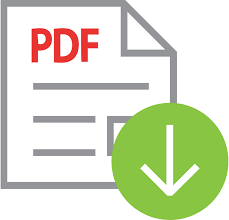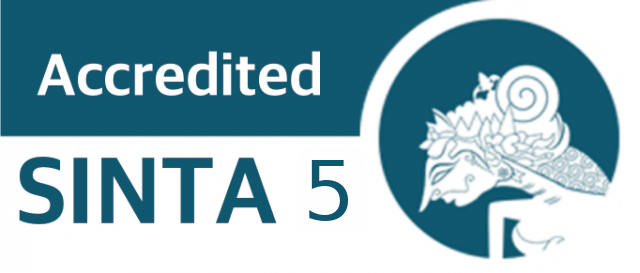How Significant is the Role of Family Socioeconomic Status in Archaism Among Kankanaey Speakers?
 ), Shirley Lacson Ayao-ao(2),
), Shirley Lacson Ayao-ao(2), (1) Saint Louis University
(2) Saint Louis University
 Corresponding Author
Corresponding Author
Copyright (c) 2024 John Rey Osben Pelila
DOI : https://doi.org/10.24036/ell.v13i1.127041
Full Text:
 Language : en
Language : en
Abstract
Archaism has been a focal point in language studies, with scholars identifying various variables that influence this phenomenon, including age, gender, civil or marital status, level of educational attainment, and religion. An emerging factor is the socioeconomic status (SES) of the family and the involvement of parents. This study aims to determine if different SES have an impact on the level of archaism among a specific group of speakers. Employing a quantitative method with simple triangulation, the study surveyed and interviewed 331 Kankanaey language speakers from the adulthood group. The findings revealed that the socioeconomic status of their families, particularly their parents, did not significantly affect the level of archaism in the words surveyed. Instead, 'age' emerged as the sole determinant of archaism among the speakers in the present study. Though it is strongly recommended to explore further studies to elucidate the anomaly of greater familiarity with the surveyed words among Kankanaey speakers aged 40-49 compared to those in the age group 50-59, it remains a limitation of the present study.
Keywords
References
Ali, A. (2017). Influence of religion on language use: A sociopragmatic study on the influence of religion on speech acts performance [Doctoral Dissertation, University of East Anglia].
Arshad, M., Attari, Z. H., & Elahi, E. (2012). Impacts of parents’ profession on their children’s learning English in Pakistan. International Journal of Learning and Development, 2(1), 426-437.
Ayan, E. (2015). Minority language loss: Sociocultural and linguistic causes. European Journal of English Language, Linguistics and Literature, 2(1).
Azim, F., & Jufrizal, J. (2020). The archaic words of Minangkabau found in Padang Lua. E-Journal of English Language and Literature, 9(1), 32-37. https://doi.org/10.24036/ell.v9i1.108064
Aziz, Z. A., Yusuf, S. B., Mustafa, F., & Munawarah, S. (2020). Acehnese archaic words in Hikayat: An early influential literary work. Lingua Cultura, 14(2), 161-169. https://doi.org/10.21512/lc.v14i2.6498
Brenzinger, M., Dwyer, A. M., de Graaf, T., Colette, C. G., Krauss, M., Miyaoka, O., Ostler, N., Sikayama, O., Villalón, M. E., & Zepada, O. (2003). Language vitality and endangerment. International Expert Meeting on UNESCO Programme Safeguarding of Endangered Languages, 1-25. https://unesdoc.unesco.org/ark:/48223/pf0000183699
Burke, D. M., & Shafto, M. A. (2004). Aging and Language Production. Current Directions in Psychological Science, 13(1), 21–24. https://doi.org/10.1111/j.0963-7214.2004.01301006.x
Cabilitazan, A. A., Ingosan, J. S., Ingosan, J. S., Irabagon, J., Jacinto, P. G., &
Lam, J. O. (2019). Establishing the syntactic rules of the Kankanaey dialect using TensorFlow [Paper presentation]. International Conference on Information Technology and Digital Applications 2019, Yogyakarta, Indonesia.
Chairuddin, C. (2018). The shift of Acehnese language in Pulau Kampai community, North Sumatra. Language Literacy: Journal of Linguistics, Literature and Language Teaching, 2(1), 48-57.
Chavant, F., Favrelière, S., Lafay-Chebassier, C., Plazanet, C., & Pérault-Pochat, M.C. (2011). Memory disorders associated with consumption of drugs: Updating through a case/noncase study in the French PharmacoVigilance Database. British Journal of Clinical Pharmacology, 72(6), 898 - 904. https://doi.org/10.1111/j
Clearinghouse Technical Assistance Team at Penn State. (2020). Parents’ educational levels influence on child educational outcomes: Rapid literature review. https://militaryfamilies.psu.edu/wp- content/uploads/2020/01/Parents-Educational- Levels-Influence-on- Child-Educational-Outcomes.20Jan06.final_.pdf
Cohen, J., & Wickens, C. M. (2015). Speaking English and the loss of heritage language. The Electronic Journal for English as a Second Language, 18(4).
Conroy, R. M. (2018). The RCSI Sample size handbook: A rough guide. Royal College of Surgeons, Ireland. https://doi.org/10.13140/RG.2.2.30497.51043
Cornelio, J.S., & de Castro, D.F.T. (2016). The state of indigenous education in the Philippines today. In: Xing J., Ng P. (Eds.) Indigenous
Culture, Education and Globalization. https://doi.org/10.1007/978-3-662-48159- 2_9
Cortina, J. M. (1993). What is coefficient alpha? An examination of theory and applications. Journal of Applied Psychology, 78(1), 98-104.
David, M. K., Cavallaro, F., & Coluzzi, P. (2009). Language policies – impact on language maintenance and teaching: Focus on Malaysia, Singapore, Brunei and the Philippines. In F. Cavallaro, A. Milde, & P. Sercombe (Eds.), The Linguistics Journal: Special Edition.
Decker, K., & Abraham, B. (2022). A sociolinguistic profile of the Kami [kmi] language of Niger State, Nigeria with additional observations on Nupe languages. Journal of Language Survey Reports, 21, 1 – 51. https://www.sil.org/resources/archives/95076
Decker, K., Danladi, Y., Dabet, J., Aregbesola, A., Araokanmi, T., & Gootjes, D. (2021). A sociolinguistic profile of the Duhwa [kbz], Mindat [mmf], and Sya [scw] languages of Plateau State, Nigeria. Journal of Language Survey Report, 49, 1 – 49. https://www.sil.org/resources/archives/91554
Decker, K., Danladi, Y., Abraham, B., Muniru, J., & Dabet, J. (2021). A sociolinguistic profile of the Firan [fr] language of Plateau State, Nigeria. Journal of Language Survey Report, 2, 1 – 40. https://www.sil.org/resources/archives/87279
Desriawati, N., Yusuf, Y. Q., & Fitriani, S. S. (2021). An analysis of Acehnese archaic words among north Acehnese speakers. English Education Journal (EEJ), 12(1), 106-123. https://doi.org/10.24815/eej.v12i1.19051
Do, D., & Schnittker, J. (2020). Utilization of medications with cognitive impairment side effects and the implications for older adults' cognitive function. Journal of Aging and Health, 32(9), 1165 - 1177. https://doi.org/10.1177/0898264319895842
Eames, A. J. (2019). Imperialism’s effects on language loss and endangerment: Two North American cases of resilience, the Maliseet-Passamaquoddy and wôpanâak language communities [Master's thesis, Harvard Extension School]. http://nrs.harvard.edu/urn-3:HUL.InstRepos:42004079
Graves, L. V., Moreno, C. C., Seewald, M., Holden, H. M., Van Etten, E. J., Uttarwar, V., McDonald, C. R., Delano-Wood, L., Bondi, M. W., Woods,
S. P., Delis, D. C., & Gilbert, P. E. (2017). Effects of age and gender on recall and recognition discriminability. Archives of Clinical Neuropsychology, 32(8), 972–979. https://doi.org/10.1093/arclin/acx024
Haynes, E. (2010). Heritage Briefs: What is language loss?. Center for Applied Linguistics. https://www.cal.org/heritage/pdfs/briefs/what-is-language- loss.pdf
Huh, C. R. (1997). Sociocultural factors in the loss of one's mother tongue: The case of Korean immigrant children [Master’s thesis, California State University]. Theses Digitization Project, 1187. https://scholarworks.lib.csusb.edu/etd-project/1187
Humeidat, A. R. (2018). Assessing al-koura rural dialect archaic vocabulary among the young generation. International Journal of Linguistics, 10(4). https://doi.org/10.5296/ijl.v10i4.13457
Iwaniec, J. (2018). The effects of parental education level and school location on language learning motivation. The Language Learning Journal, 1-15. https://doi.org/10.1080/09571736.2017.1422137
Kalaycı, G., & Öz, H. (2018). Parental involvement in English language education: Understanding parents’ perceptions. International Online Journal of Education and Teaching (IOJET), 5(4), 832-847. http://iojet.org/index.php/IOJET/article/view/447/296
Karagulova, B., Kushkimbayeva, A., Kurmanbayeva, S., Khan, A. A., & Kaiyrbaeva, Z. (2016). Linguocultural description and formation of archaic words. Indian Journal of Science and Technology, 9(14), 1-6. https://doi.org/10.17485/ijst/2016/v9i14/91080
King, J. (1992). Archaisms and innovations in soviet Korean dialects. Language Research, 28(2), 201-223.
Komisyon sa Wikang Filipino. (2018). Kapasiyahan ng kalupunan ng mga komisyoner blg. 18-33 serye 2018. Komisyon ng Wikang Filipino.
Luo, R., Song, L., Villacis, C., & Santiago-Bonilla, G. (2021). Parental Beliefs and Knowledge, Children's Home Language Experiences, and School Readiness: The Dual Language Perspective. Front Psychol, 12, 1-12. https://doi.org/10.3389/fpsyg.2021.661208
Malabonga, R. L. (2016). Linguistic suicide and the challenges of heritage transmission in the Philippines: The case of the Ayta Alabat island language. In L. Oosterbeek, B. Werlen, & L. Caron (Eds.) Sustainability and Sociocultural Matrices Transparency Contributions for Cultural Integrated Landscape Management. Instituto Terra e Memória, Apheleia.
Martin, S., Saur, D., & Hartwigsen, G. (2022). Age-dependent contribution of domain-general networks to semantic cognition. Cerebral Cortex, 32(4), 870–890. https://doi.org/10.1093/cercor/bhab252
Mercuri, S. P. (2012). Understanding the interconnectedness between language choices, cultural identity construction and school practices in the life of a Latina educator. Gist Education and Learning Research Journal, 6, 12-43.
Milian, M. (2019). Bridges to bilingualism: Teachers’ roles in promoting indigenous languages in Guatemala. FIRE: Forum for International Research in Education, 5(3), 105-128.
Moghaddam, M. J., & Balaghat, S. R. (2019). Relationship between parent’s religious orientation, verbal communication and sociability of primary school students (second course) in Zahedan city. Utopía y Praxis Latinoamericana, 24(6), 396-406. https://www.redalyc.org/journal/279/27962177043/html/
Nadra, N. (2018). The archaic forms of the Kamang Hilir isolect of the Minangkabau language. Proceedings of the 2nd Workshop on Multidisciplinary and Applications, Padang, Indonesia. https://doi.org/10.4108/eai.24-1-2018.2292379
Navarrete, E., Pastore, M., Valentini, R., & Peressotti, F. (2015). First learned words are not forgotten: Age-of-acquisition effects in the tip-of-the-tongue experience. Memory & Cognition, 43, 1085–1103 (2015). https://doi.org/10.3758/s13421-015-0525-3
Otronyi, L., Muniru, J., Hansley, M., Magnusson, C., Rueck, M. J. (2011). Summary report of a sociolinguistic survey of the Obanliku speech varieties of Cross River State, Nigeria. Summer Institute of Linguistics (SIL) International. https://www.sil.org/resources/archives/57483
Olko, J., & Sullivan, J. (2014). Toward a comprehensive model for Nahuatl language research and revitalization. Proceedings of the Fortieth Annual Meeting of the Berkeley Linguistics Society, California, USA. https://escholarship.org/uc/item/7g88w6nn
Omolade, A., Kassim, A., & Modupe, S. (2014). Relative effects of parents’ occupation, qualification and academic motivation of wards on students’ achievement in senior secondary school Mathematics in Ogun State. Journal of Education and Practice, 5(22), 99-105.
Pan, B. A., & Gleason, J. B. (1986). The study of language loss: Models and hypotheses for an emerging discipline. Applied Psycholinguistics, 7, 193- 206.
Pelila, J. R. O., Ayao-ao, S. L., & Casiano, M. B. (2023). If these languages could talk: The extinct languages of the Philippines. International Journal of Multidisciplinary Research and Publications (IJMRAP), 6(3), 127-134.
Petchprasert, A. (2014). The Influence of Parents’ Backgrounds, Beliefs about English Learning, and a Dialogic Reading Program on Thai Kindergarteners’ English Lexical Development. English Language Teaching, 7(3), 50-62. http://dx.doi.org/10.5539/elt.v7n3p50
Prahalathan, G. (2015). Some archaic word forms dropped by Jaffna Tamil society. International Journal of Language and Literature, 3(1), 192-197. http://dx.doi.org/10.15640/ijll.v3n1a24
Rhodes, S., Greene, N.R. & Naveh-Benjamin, M. (2019). Age-related differences in recall and recognition: a meta-analysis. Psychonomic Bulletin & Review, 26, 1529–1547. https://doi.org/10.3758/s13423-019-01649-y
Ross, A., & Willson, V.L. (2017). One-way Anova. In: Basic and Advanced Statistical Tests. SensePublishers. https://doi.org/10.1007/978-94-6351- 086-8_5
Rusady, D. & Munawarah, S. (2017). Searching of Sundanese archaic words in inner and outer Badui. Proceedings of the Tenth Conference on Applied Linguistics and the Second English Language Teaching and Technology Conference, Bandung, Indonesia. https://doi.org/10.5220/0007171505920596
Safwat, R. F., Sheikhany, A. R. (2014). Effect of parent interaction on language development in children. The Egyptian Journal of Otolaryngology, 30, 255-263. https://doi.org/10410/1012-5574.138488
Samani, S., & Latifian, M. (2008). Investigating the effect of belief in religious values and collectivism on emotional self-control [Master’s Thesis, University of Tehran].
Schmid, M. S., & Karayayla, T. (2020). The roles of age, attitude, and use in first language development and attrition of Turkish-English bilinguals. Language Learning, 70, 54-84. https://doi.org/10.1111/lang.12361
Strongman, L. (2017). Language evolution, acquisition, adaptation and change. Sociolinguistics Interdisciplinary Perspectives, 18-31. http://dx.doi.org/10.5772/67767
Sygaco, S. B. (2022). The shift of the first language during migration. Asian Journal of Interdisciplinary Research, 5(1), 26-34. https://doi.org/10.54392/ajir2214
Tajolosa, T. D. (2015). Predicting the ethnolinguistic vitality of an endangered Philippine language: The case of three Batak communities in Palawan. Asia Pacific Linguistics, 4, 49-75.
Tao, G. (2019). Globalization of English: Loss of minority languages and cultural. International Forum of Teaching and Studies, 15(2), 36-44.
Ulfa, M., Isda, I. D., & Purwati, P. (2018). The shift of Acehnese language: A sociolinguistic study to preserve regional languages. Studies in English Language and Education, 5(2), 161-174. https://doi. org/10.24815/siele.v5i2.8943
Unganer, T. (2014). First language loss: Why should we cae?. Procedia - Social and Behavioral Sciences, 158, 351-355. https://doi.org/10.1016.j.sbspro.2014.12.099
Ušinskienė, V. (2019). Some types of archaisms in Polish dialects in Lithuania. Slavistica Vilnensis, 64(2), 99-113. https://doi.org/10.15388/SlavViln.2019.64(2).24
Villanueva, H. D., & Baluyos, E. L. (2014). Ethnolinguistic vitality of the Subanen communities in Ozamiz City, Philippines. Journal of Multidisciplinary Studies, 3(2), 66-88. http://dx.doi.org/10.7828/jmds.v4i1.633
Walczak, A., Harrison, G., Muratorio, M., Flores, C., Brunner, S., & Docherty, C. (2017). Which factors affect English language attainment? A study of school students in Chile. Research Notes, 65, 51–65.
Yulis, E., Jufrizal, J., Ardi, H. (2013). An analysis of dead words of Minangkabaunese in Koto Tabang-Pariaman dialect. English Language and Literature E-Journal, 2(1), 98-105. https://doi.org/10.24036/ell.v2i1.2398
Zhou, Y. (2020). The influence of family on children’s second language learning [Master’s Thesis, University of Windsor]. https://scholar.uwindsor.ca/major- papers/112
 Article Metrics
Article Metrics
 Abstract Views : 415 times
Abstract Views : 415 times
 PDF Downloaded : 49 times
PDF Downloaded : 49 times
Refbacks
- There are currently no refbacks.
Copyright (c) 2024 John Rey Osben Pelila

This work is licensed under a Creative Commons Attribution-NonCommercial 4.0 International License.












